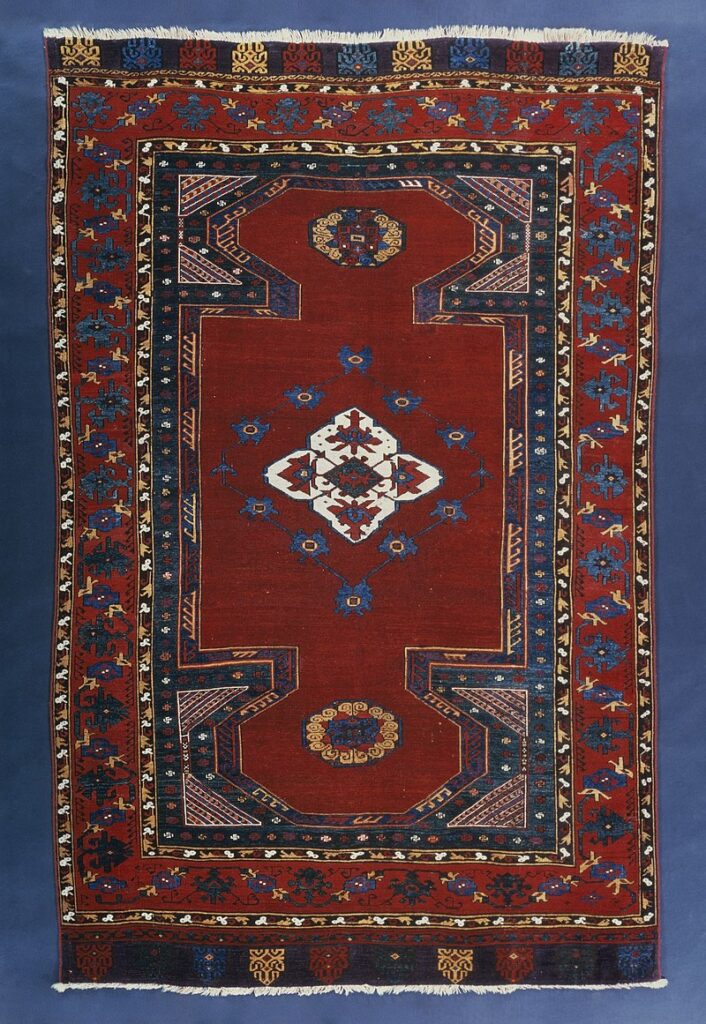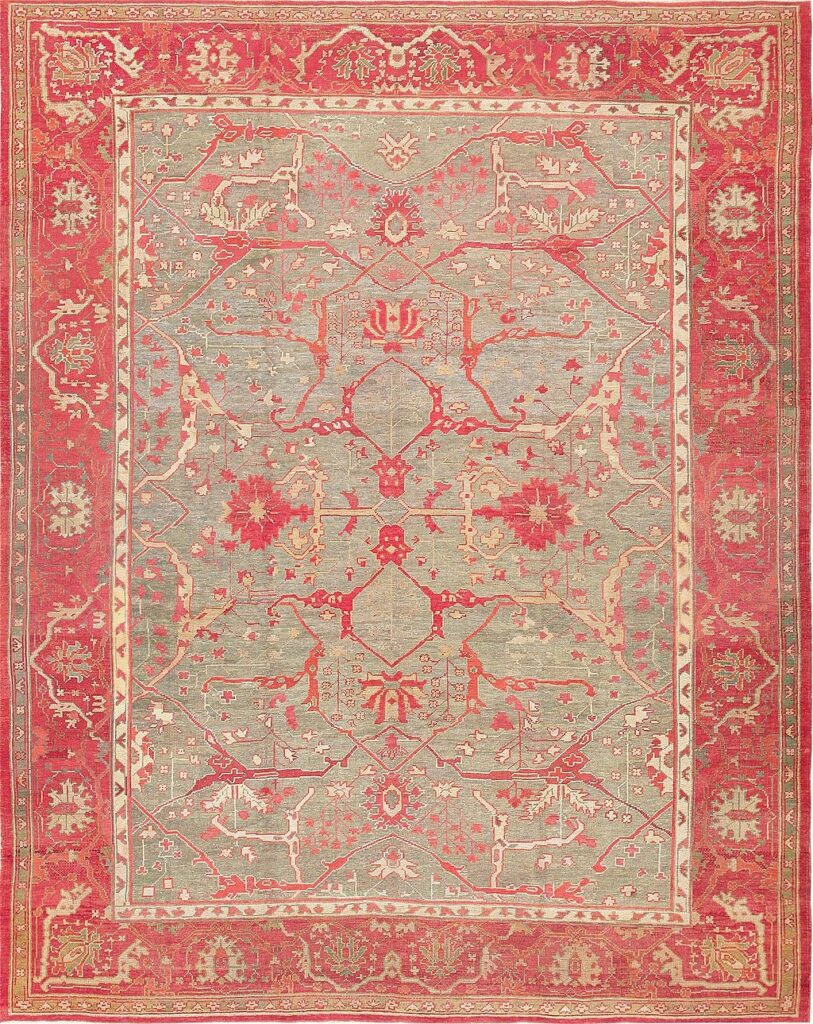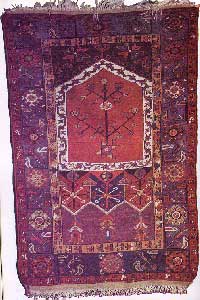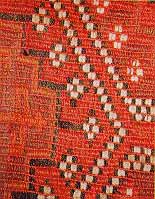Savouring Pleasures of Life with Turkish Carpets
Gorgeous Oriental carpets rank among the most alluring things that one can have in the personal collection, in the living room floor or hanged in the wall. However, choosing one of them can be a challenge. Such rugs can be compared to highly valuable ‘objets d’art’ like paintings or sculptures. Carpet weaving remains one of the most ancient ways for the expression of applied arts. The ideal way to buy an oriental rug would be to travel at the countries where they are made. Traveling to Iran, Afghanistan, the Caucasus region or Turkey would be the perfect way for learning more how these rugs are made.
The Historical Journey of Turkish Rugs
Turks are some of the most ancient carpet weavers. The area of Anatolia is strongly linked to carpets.The cities of Sivas, Konya and Kayseri turned into important centers of production and the rugs made were named after the name of these cities. The tradition of carpet weaving in Turkey dates back to the 11th century when Turkish tribes settled in Anatolia. This era marked the beginning of a flourishing craft that would eventually gain worldwide recognition. The cities of Sivas, Konya, and Kayseri became renowned centers of rug production, with each region developing its unique style and technique. The early designs were influenced by tribal life, featuring geometric and floral motifs that were symbolic of the weavers’ surroundings.
As Turkish rugs gained popularity, their presence in European art became more pronounced. Renaissance painters, captivated by the beauty and intricacy of these oriental handicrafts, often depicted them in their works, providing a visual record of the rugs’ evolution and their journey West. This period also saw the emergence of Bergama and Usak (Oushak) as significant weaving centers, further enriching the diversity of designs and styles available.
At first, these rugs presented floral and geometrical motifs and reflected tribal influences. Later, images of animals started to be included in carpets. Even though few rugs from that period remained, European painters from the Renaissance period included them in their paintings. In the 15th century, Anatolian carpets started to appear in renaissance art. The artworks of Lotto, Bellini, Holbein, Memling, Carpaccio and many others that were fascinated by oriental handicrafts served as perfect ways of documentation for the rugs imported from Turkey.
In the same period, the cities of Bergama and Usak or Oushak gained importance as weaving centers. Other carpets that were made at the area along with Kayseri, Konya Oushak, and Bergama are Milas, Sivas, Kula and Yuruk. Some of these are also recognized as Transylvanian rugs because they have been found in churches in Transylvania. Hereke is another area near Istanbul that was famous because of its exclusivity for the production of carpets for the Ottoman Sultans. Even though the time of Sultans faded long time ago, Hereke remains still one of the places where are weaved some of the finest rugs.
The Craftsmanship Behind Turkish Rugs
Carpet weaving is one of the oldest crafts in Turkey and the rugs produced in the country are highly wanted by interior decorators. They fit in every home design due to their nomadic origin, which makes it easy to pair patterns. Nomadic carpets rank among the most wanted oriental rugs.
The art of rug weaving in Turkey is a skill passed down through generations, predominantly by women. This craft is not merely about creating a product; it is a means of storytelling, where each knot and color choice represents a piece of the weaver’s heart and soul. The designs are meticulously planned to ensure harmony, with every element chosen to contribute to the overall unity of the piece. This process is akin to writing poetry, where the language of expression is not words, but knots and motifs.
The Legacy of Female Weavers
Another important detail about Turkish rugs is that they have been mostly weaved by women. This fact is believed to explain the harmony of designs and patterns in Turkish rugs. Designs are chosen to be in harmony with each other, thus to create a language of expression. Each element is carefully selected in order to create the unity of the carpet. Women weavers consider their creations as poetry expressed in knots and motifs.
Acquiring a Turkish Rug
While the ideal scenario for purchasing a Turkish rug would involve traveling to Turkey to explore its markets and meet the artisans, it is not always feasible. However, understanding the history, craftsmanship, and significance of these rugs can enhance the buying experience, even from afar. When selecting a Turkish rug, remember that you’re not just buying a piece of decor but a piece of history and culture that will add unparalleled beauty and warmth to your home.
Currently, the rugs made in Turkey portray patterns that include medallions, flowers Safavid-Persian style arabesques and carefully chosen colors that can fit in every room. Prayer rugs or nomadic carpets, each of them will enlighten your house. Now that you know more about Turkish rugs, it will be easier to find one without traveling to Turkey and remember that you can never outfox a Turkish merchant of rugs.
FAQs About Turkish Rugs
- How do I identify an authentic Turkish rug? Authentic Turkish rugs are hand-knotted and often feature specific regional designs and motifs. The quality of the wool, the tightness of the weave, and the natural dyes are also indicative of authenticity.
- Can Turkish rugs be placed in any room? Yes, Turkish rugs are versatile and can enhance any space, from living rooms and bedrooms to kitchens and bathrooms, depending on their size, material, and design.
- How do I care for my Turkish rug? Regular vacuuming, avoiding direct sunlight, and immediate attention to spills are crucial. Professional cleaning is recommended for deep cleaning.
- Are Turkish rugs a good investment? High-quality Turkish rugs can be a good investment as they are durable, timeless, and often increase in value over time.
Turkish rugs, with their deep-rooted history, intricate craftsmanship, and breathtaking designs, offer more than just aesthetic appeal; they bring a piece of Turkish culture and history into your home, making every rug a valuable and cherished possession.
References:
Alois Riegl: Altorientalische Teppiche. Hrsg.: A. Th. Engelhardt. Wiederdruck-1979 Auflage. 1892, ISBN 3-88219-090-6.
F.R. Martin: A History of Oriental Carpets before 1800. Printed for the author in the I. and R. State and Court Print, Wien 1908.
Walter Denny: The origin of the designs of Ottoman court carpets. In: Hali. Band II, Nr. I, 1979, S. 9–10.
Christie’s Auktionskatalog „The Bernheimer family collection of carpets“, 14. Februar 1996, S. 27.





